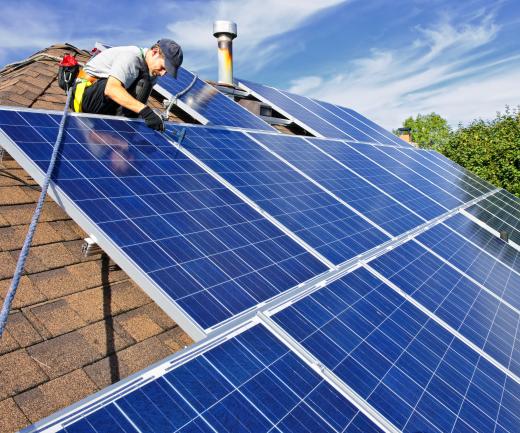Sustainable architecture design uses types of design techniques to achieve greater sustainability in energy, land, and water usage, as well as in building materials. Sustainable energy design takes climate and natural geographical features into consideration, in an effort to use those attributes to reduce impact on the environment. Energy conservation can be achieved to a greater degree in new construction, as choices are many at the pre-construction stage.
For example, in planning to build a home on a lot, sustainable architecture design would factor in geographical features, such as a lot's orientation to the angle of sunlight throughout the day and seasons. This sunlight factor may be considered as both a potential negative and positive on the overall energy usage of the structure. If there is abundant sunlight from one direction, then solar panels may be installed on the roof. At the same time, window coverings may be designed to respond to more or less light through manual or automatic means, with an aim toward reducing the amount of heating or cooling that is required.

Another type of eco-friendly architecture addresses energy needed to maintain a certain comfort level. Many possibilities for reducing energy consumption are available and include technology that regulates energy output, stores energy, produces energy, and conserves energy through active or passive means. For example, for a home situated in a windy place, a small wind turbine could offer a homeowner cheap, renewable energy generation.
The choice of building materials is another type of sustainable architecture design. The choice in traditional building materials arose in various cultures over time, with people generally using locally abundant materials to erect buildings. These included plants, stones and rocks, wood, and animal hair, fur, or hides.
In modern societies, building codes were developed that conformed to specifications for load-bearing, zoning, and other methods used both to make safer buildings, and to limit development in certain areas. The challenge in sustainable architecture design is that these materials are not necessarily the most scientific choice, but since they are traditional and have been included building codes, they are easier to use. Alternative building materials may incorporate natural fibers and materials, as well as mixtures of fibers and resin called composites.
An example of this type of architecture design would be straw bale construction. Bales of straw are stacked and placed in spaces between outer and inner walls. Since farming practices around the world produce abundant straw, the material is readily available and inexpensive, and it offers significant reductions in energy costs for heating and cooling. Composites are lightweight, but very strong, and can replace other manufactured materials requiring more energy to be produced and shipped.
Landscaping in sustainable architecture design is another type of design technique. Choices in plants that are more suited to the local environment can decrease water usage while preserving topsoil. Replacing the traditional grass lawn with sustainable plantings of native grasses and plants can also eliminate mowing.
